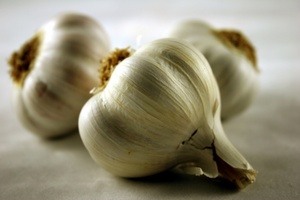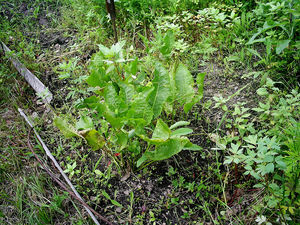There are few cultures in the United States more fascinating than that of Native America itself. The Choctaw Indians are certainly no exception. The largest Muskogean tribe in the Southeast region, the complex history and lifestyle of these people offers a remarkable look at the customs and rituals of ancient America, as well as its world-altering adaptation to the English way of life.
The origin of the Choctaw people is unclear. While there are several legends involving the tribe’s migration to the Southeast from other parts of the U.S., the story most-shared is one of creation. The Rise and Fall of the Choctaw Republic by Angie Debo states that a sacred mound, called Nanih Waya, was the site of the ancestors’ beginning, “issued from a hole or cave under the great mound, and ranged themselves around the sides to dry before dispersing to occupy the surrounding country” (Debo 2). Nanih Waya, which is speculated to mean “leaning” or “sloping hill”, was located in what is now Winston County, Mississippi (Debo 1). The Choctaws settled in much of central and south Mississippi, but some clans within the tribe made their homes in southwest Alabama (Debo 1). Many of the clans were later exiled by the white man to what is now Oklahoma.
Their closest neighbors were the Chickasaws. It is quite possible that the Choctaws and Chickasaws once lived in unity as one large tribe, as per Encyclopedia of Mississippi Indians (75). Although very similar in language and customs, the Choctaws were much less aggressive than the Chickasaws (75). Despite having to defend themselves against others, the Choctaws lived peacefully among their own tribe with few laws or moral obligations (76). While not particularly religious, they did believe in spirits, magic, and superstition, and they carried out complex rituals with conviction. Without a doubt, the most bizarre and shocking of these rituals was for the dead. As per Encyclopedia of Mississippi Indians, the deceased body was allowed to decompose over a period of several days, “then the family gathered around where a bone picker would clean the bones of flesh” (76). The appointed “bone picker” used his long fingernails to strip the body down to its skeleton (76). The skull was then painted, while the rest of the bones were collected and stored in a house or grave (76).
The lifestyle of the Choctaw family was quite out of the ordinary for its era. The book The Rise and Fall of the Choctaw Republic states that both the man and woman had freedom in choosing their mate, and the woman’s feelings were of great importance, as she even received one last chance to flee the commitment during the wedding ceremony (Debo 16). Couples could only marry if they were not of the same clan, but polygamy and sexual immorality outside of one’s clan was common and accepted, unless of course you were female (Debo 15,16). However, with the exception of adultery being forbidden and punishable by the offended husband’s wishes, women “were placed in prominent, rather powerful positions” according to Encyclopedia of Mississippi Indians (77). Children did not answer to their father, but to their mother and mother’s eldest brother (Debo 15). Uncles also controlled chieftainship, as the chief’s nephew inherited his position instead of his son (Debo 15). Children had a free and easy life. They were allowed to roam and play with almost no rules or restrictions, in fact, rough sports and other dangerous activities were encouraged (Debo 17).
By far, the most popular sport in early Choctaw culture was Stickball. The Mississippi Band of Choctaw Indians describes Stickball as “hard-fought contests that could involve as few as twenty or as many as 300 players” (Choctaw.org). The game consisted of players using two bent sticks, called “kaboccas”, to hit a handcrafted ball of leather, called a “towa”, down a field to a designated goal (Choctaw.org). Reaching the goal equalled a score of points for that team, as long as the towa wasn’t touched by the body (Choctaw.org). The Mississippi Band of Choctaw Indians website insists that Stickball competitions were held to settle community disagreements peacefully, however, author Angie Debo states in The Rise and Fall of the Choctaw Republic that “serious injuries, even resulting in the death of the contestants, were not uncommon” (Debo 9). These events were quite a spectacle, with a “pep rally” of sorts preceding on the night prior to the game. The athletes celebrated their anticipated event in song and dance, waving and clanging their sticks around their respective goal posts, as the women gathered to form a line, dancing and cheering for their team (Debo 8). Bets were placed using personal belongings as collateral, and witchdoctors spent the evening casting magic spells on the teams they opposed (Debo 9). Following the men’s competition, women from each team would gather on the field and play their own round of Stickball, which was often just as impressive and exciting as the main event (Debo 9).
Stickball was not the only reason the Choctaws gathered in celebration. Festivities were common, the most well-loved being the weeks-long Green Corn Festival, which the American Indian Health and Diet Project website calls “a time for thanks” (AIHDP). This annual event was, and still is, the highlight of Choctaw culture. A feast of fish, squab, deer and other wild animals, as well as a cornucopia of vegetables were enjoyed by all. The most abundant food on the Choctaw menu was corn. Grown in the same field with beans and squash, this trio was named “The Three Sisters” (AIHDP). Dances were also an important element in Choctaw celebration. Although dancing was not at all competitive in their world, some dances were a symbol of motivation and preparation for upcoming competitions, such as Stickball (Choctaw.org). Other dances were simply for the joy of it, and were very similar to the line dancing or square dancing parties that we know today (Choctaw.org).
The daily life of the Choctaw nation was drastically transformed in the late 1700’s with the presence of the white man. Encyclopedia of Mississippi Indians states that over a period of 47 years, the tribe was tricked into signing a series of treaties, the last being The Treaty of Dancing Rabbit Creek in 1830, which resulted in the loss of their land (77). The Choctaws were forced to either submit to English rule or leave their homeland. Some stayed, but most of the clans were removed from the southeast region and sent to a new territory in what is now Oklahoma (77). In the early 1900’s, the Choctaws petitioned the United States government concerning the horrific treatment their people received during this time. The government acknowledged the complaint, and awarded the Choctaws with Federal funds for schools and other public services (77). The tribe now adheres to Federal laws, but maintains complete control over their reservations.
Today’s Choctaw lifestyle is rooted in honor and rich history as well as the opportunities of modern America. “Choctaw all learn their own language first and English in school so that most of the tribe is at least bilingual”, explains Encyclopedia of Mississippi Indians (77). Religion took a tremendous turn, as The Rise and Fall of the Choctaw Republic presents a survey of the tribe’s Christian beliefs, most of which are of the Presbyterian, Methodist, and Baptist denominations (Debo 231).
The Choctaws’ swift adaptation to the English man’s way of life earned them the title of one of the “five civilized tribes”, as per Encyclopedia of Mississippi Indians (76). Their culture is celebrated by natives and non-natives alike, through historic sites, the Choctaw Museum, and the annual Choctaw Indian Fair in Neshoba County, Mississippi (Choctaw.org). The Mississippi Band of Choctaw Indians presents a flashback into primitive Choctaw life, with feasting, dancing, native dress, crafts, and even Stickball tournaments for all ages to enjoy (Choctaw.org).
The Choctaws, as all Native Americans do, offer an interesting window into the way things once were in our great country…both the good and bad, the simple yet complex. The history of those before us allows us to understand and appreciate where our nation came from. This unique and beautiful culture deserves to be forever revered, remembered, and celebrated.
References:
“CHOCTAW.” Encyclopedia of Mississippi Indians: Tribes, Natives, Treaties of the Southeastern Woodlands Area. St. Clair Shores, MI: Somerset, 2000. 75-77. Print.
Debo, Angie. The Rise and Fall of the Choctaw Republic. Norman: University of Oklahoma, 1961. Print.
“Mississippi Band of Choctaw Indians.” Mississippi Band of Choctaw Indians. Ed. MBCI. MBCI, 2011. Web. 20 Mar. 2012.
Mihesuah, Devon A. “Choctaws and a Cornucopia of Food.” American Indian Health. American Indian Health and Diet Project, 2012. Web. 20 Mar. 2012.



